Making pine needle tea is one of the best – and easiest – ways to use foraged pine needles. This is a wonderful and simple herbal way to use pine or other conifer needles, like spruce or fir. Ease your mind and soothe your body with this delicious conifer tea!
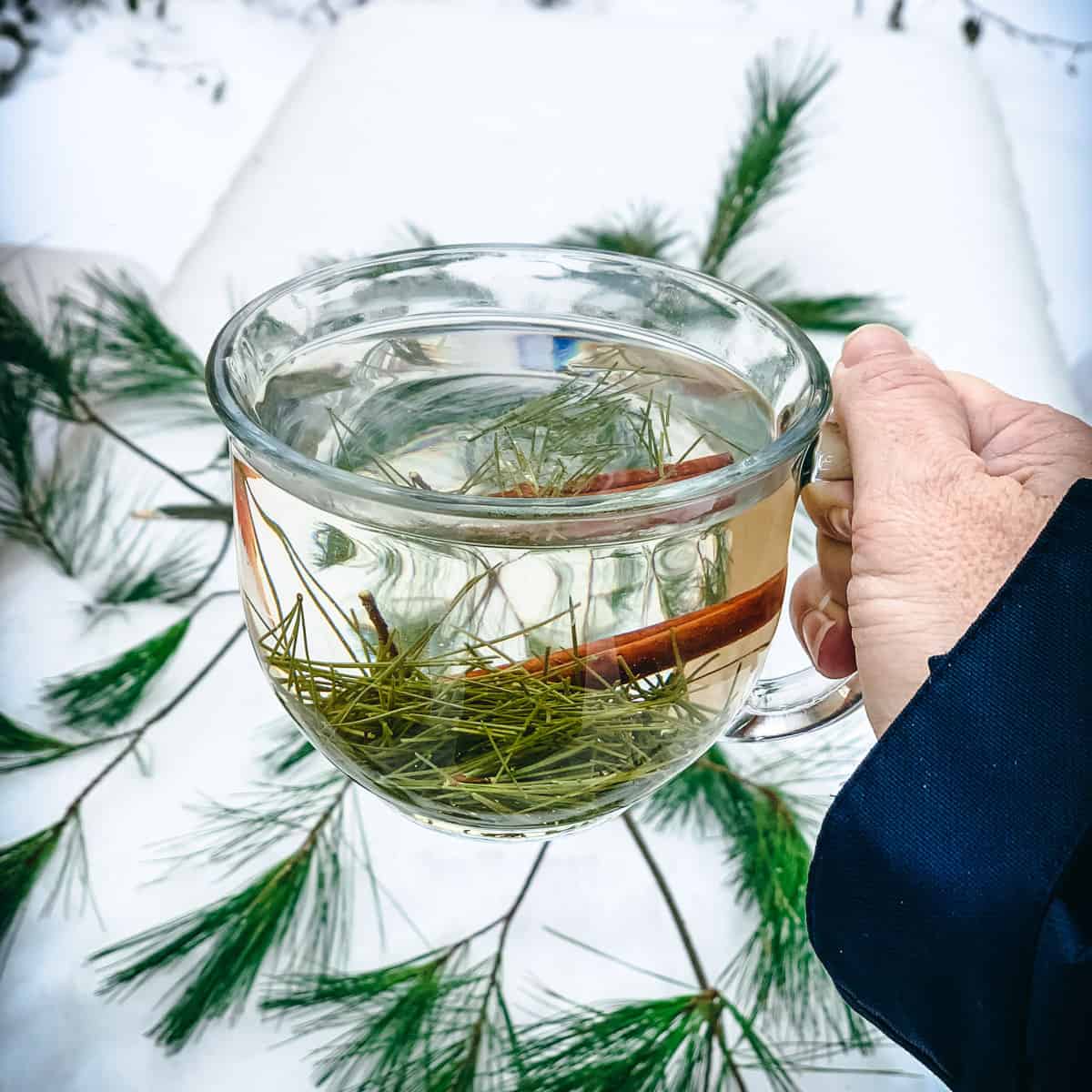
Want to save this post for later?
What is Pine Needle Tea?
There are many edible and herbal uses for foraged conifer needles, and making tea out of them is a wonderful way to access their powers.
Sometimes called “conifer needle tea,” this warming drink is simply made with foraged pine or other edible conifer needles steeped in boiling water. This is an easy way to ingest this health-supportive tea.
The aromatics of this tea alone will help you feel calm and comforted, just like you’re walking through a forest. It tastes delicious too, piney, with refreshing citrus notes.
The best part is the herbal properties you get from drinking conifer tea! It’s truly a tea to soothe your body and mind.
Related: 30+ Pine Needle Recipes: Drinks, Desserts, Syrups, Balms & More!
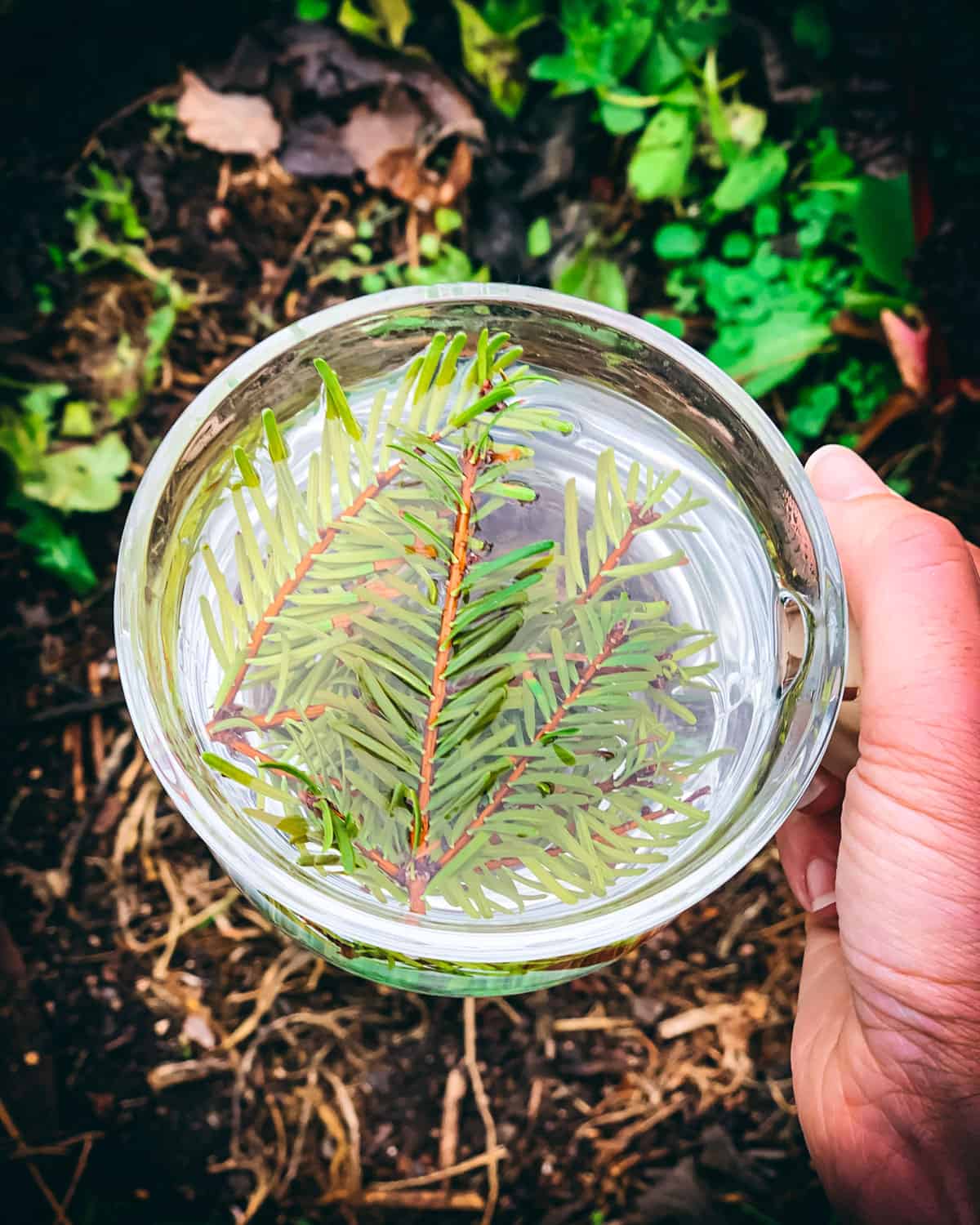
Types of Edible Conifer Needles
Some common and edible types of conifer needles you can use for making tea are most pine, fir, and spruce species.
Most conifer and pine trees can be foraged year-round, and are perfect to gather during the fall and winter when other plants are sparse.
It’s important to properly identify any tree that you want to use for tea or anything else.
The main conifer trees to avoid for consumption is the Yew family because they are highly toxic.
Find more in-depth information in these two posts: how to identify conifer trees and foraging for pine needles.
Feel confident correctly identifying and foraging conifer and pine needles with this guidebook.
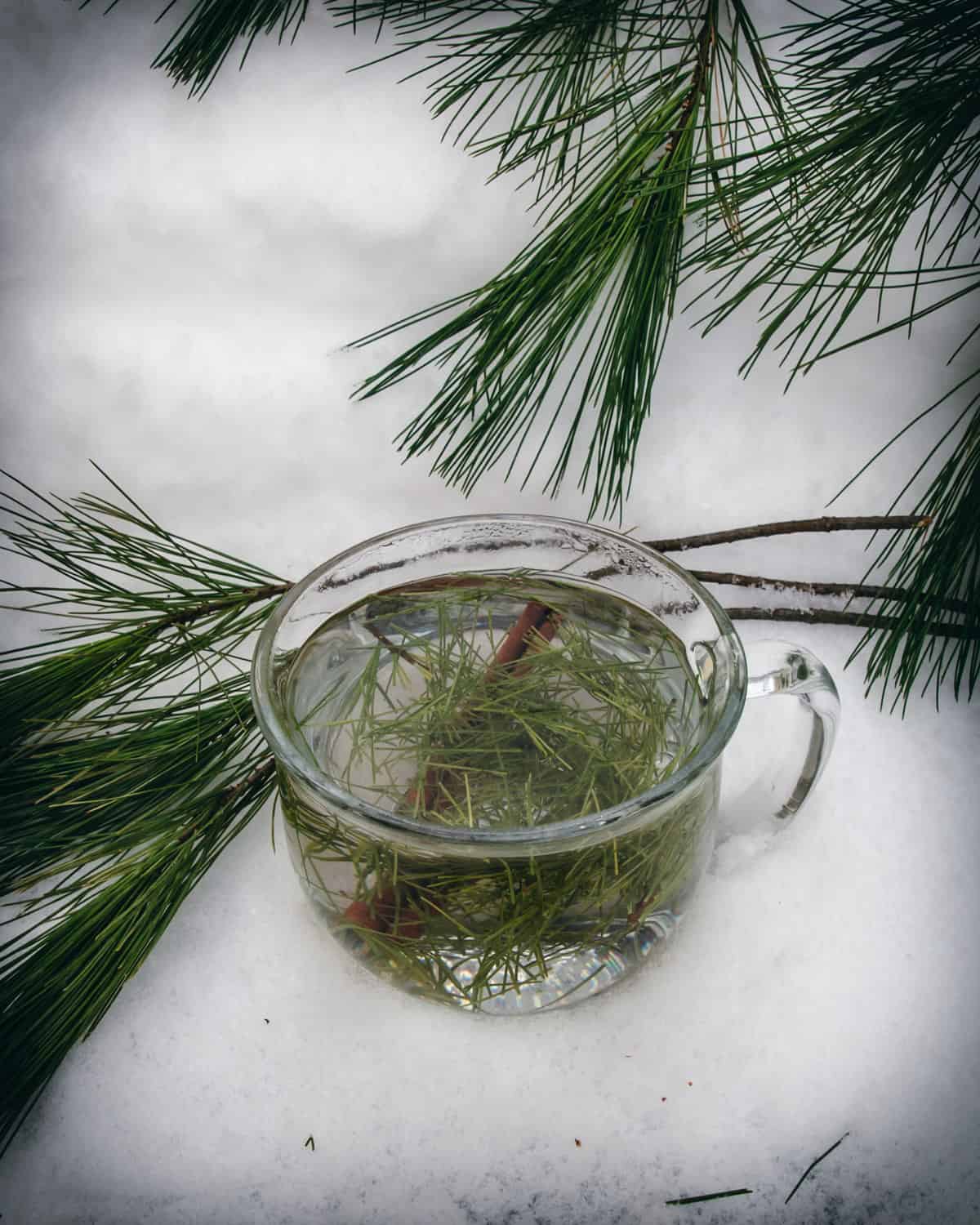
Pine Needles to Use for Tea
Some great varieties of pine trees to use for tea are eastern white pine (Pinus strobus), western white pine (Pinus monticola), red pine (Pinus resinosa), and sugar pine (Pinus lambertiana).
While most species of pine needles are safe to use for tea, there are a few varieties that you may want to avoid, especially if you are pregnant.
Ponderosa pine (Pinus ponderosa) and lodgepole pine (Pinus contorta) are not recommended to be used internally by pregnant women, as there is a chance that they could cause miscarriage if taken in large doses.
That said, ponderosa pine has been used medicinally by Indigenous Americans for hundreds of years.
Norfolk Island pine (Araucaria heterophylla) is another possibly mildly toxic conifer tree (it is definitely toxic to pets), but it is not actually a true pine.
Fir Needles to Use for Tea
As far as my research has shown, all fir trees have edible needles.
Some great fir species to use for tea are white fir (Abies concolor), grand fir (Abies grandis), noble fir (Abies procera), and balsam fir (Abies balsamea).
I will also say that Douglas fir (Pseudotsuga spp.), while not a true fir, is an excellent choice for tea-making!
Try this recipe for fir needle forest chai for a different twist on fir needle tea!
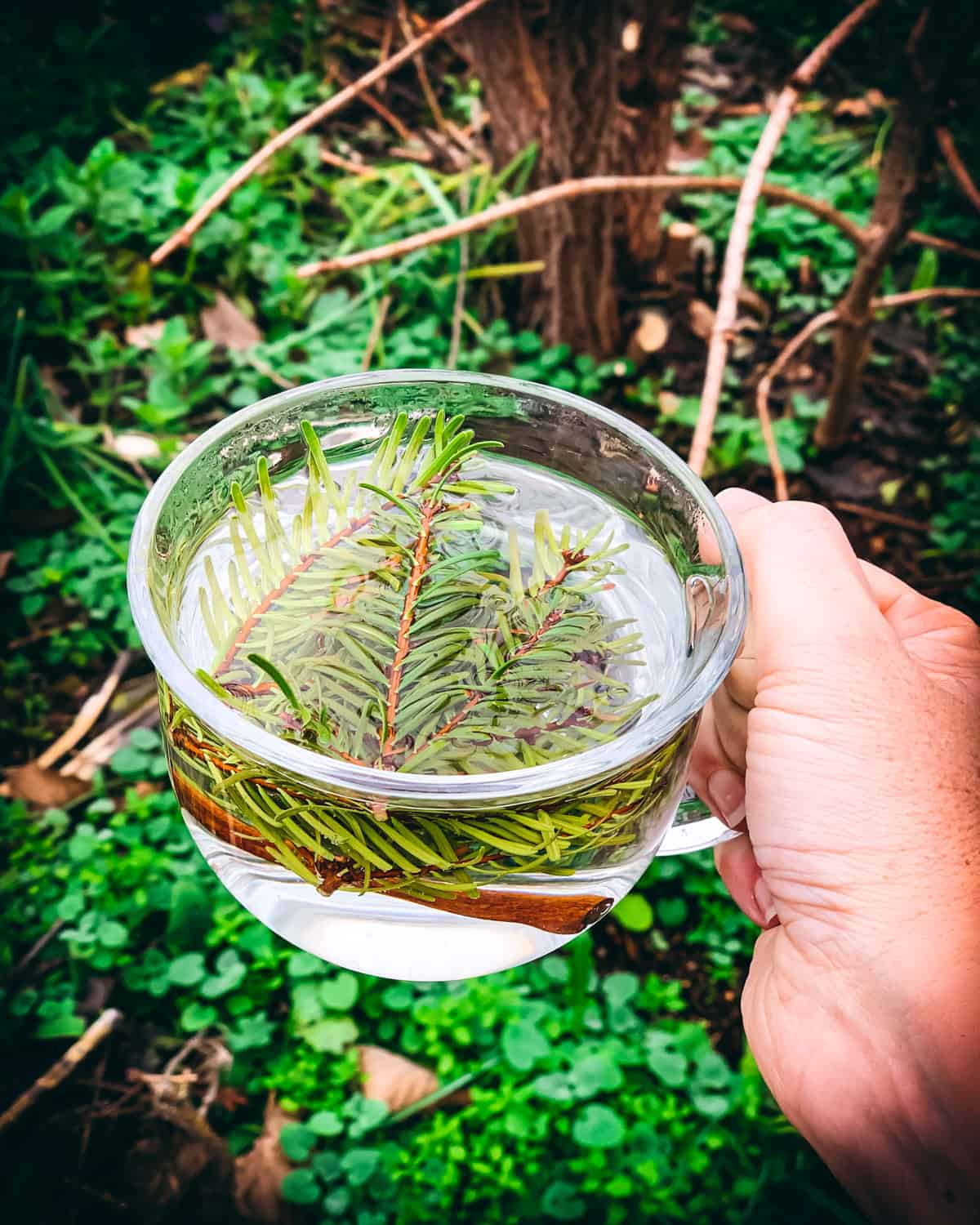
Spruce Needles to Use for Tea
Again, as far as my research, all spruce trees have edible needles. In fact, spruce tips in the springtime are a wonderful treat! I love making spruce beer with them.
Some great spruce species to use for tea are blue spruce (Picea pungens), Norway spruce (Picea abies), Sitka spruce (Picea sitchensis), and white spruce (Picea glauca).
Hemlock Needles to Use for Tea
Hemlock tree needles are edible and can also be used for tea, though not to be confused with poison hemlock which is a highly toxic plant and not a tree.
There are three common species of hemlock trees: western hemlock (Tsuga heterophylla), eastern hemlock (Tsuga canadensis), and mountain hemlock (Tsuga mertensiana).
Other Conifer Needles for Tea
Coast redwood (Sequoia sempervirens) needles can be used to make redwood tea!
I would avoid making tea from most cedars and junipers (but many juniper berries are okay to use) as many of them have toxic compounds if used internally in large amounts.
For any tree you’d like to use be sure to properly identify and check for edibility first!
How to Make Pine Needle Tea
The first step is to correctly identify and forage conifer needles.
You will want to strip or snip the needles off the branch, and if they are really long (like many pines are), cut them into smaller pieces.
Place a spoonful of the needles at the bottom of a mug.
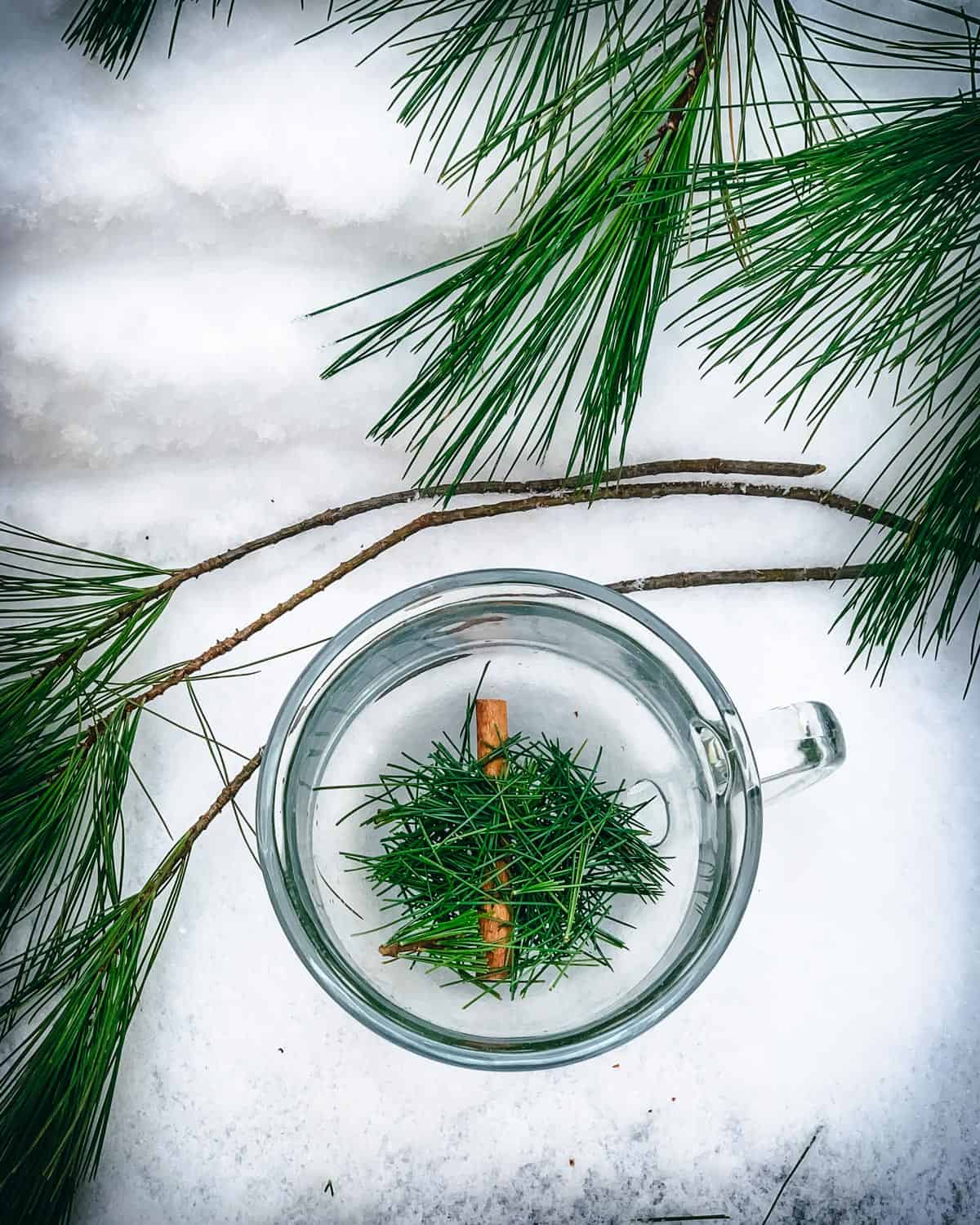
Pour boiling water over the needles and steep for about 5 minutes.
Feel free to use a tea strainer if you prefer!
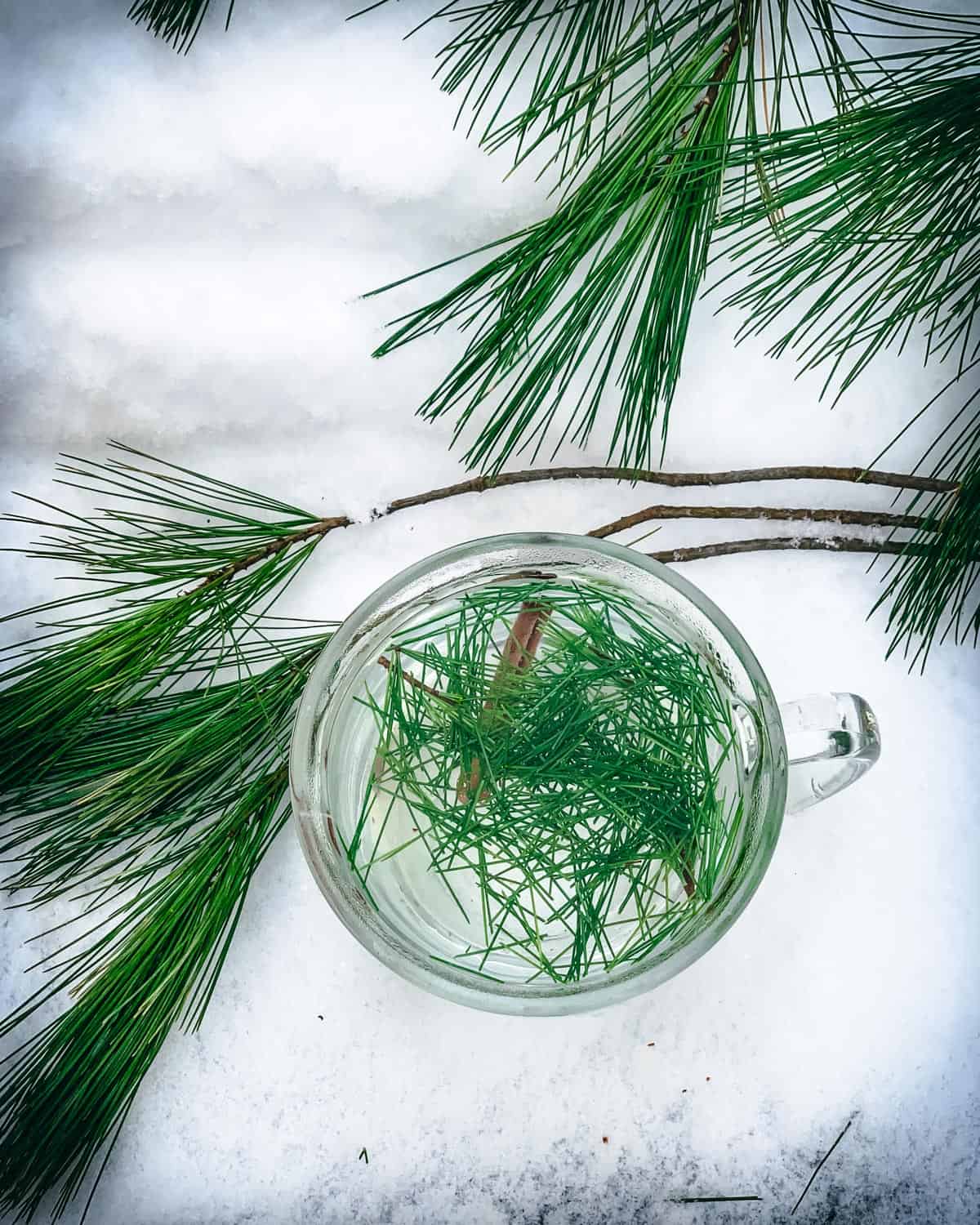
For a stronger flavored pine tea, boil the prepared needles in a pot of water for a few minutes, and strain them out as you pour them into your favorite mug.
This method makes a tasty strong tea, but it does diminish the vitamin C content some.
In either method, you can add a cinnamon stick for some extra warmth of flavor or a dollop of pine needle infused honey for added sweetness.
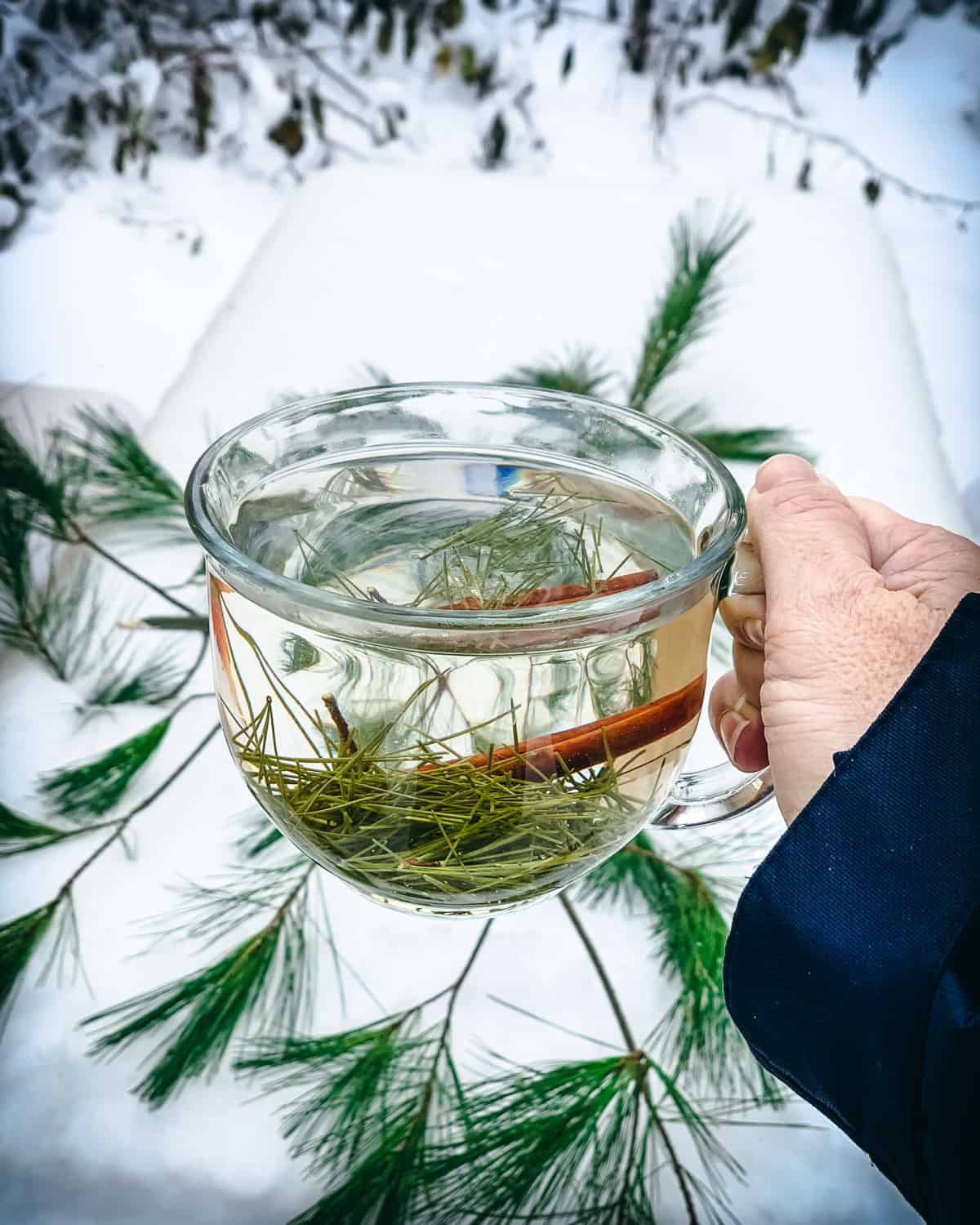
Benefits of Conifer Needle Tea
Traditionally consumed throughout winter to keep scurvy away, this delicious piney-tasting tea will give you a good dose of vitamin C.
Traditional herbalists use pine and other conifer needles for antibacterial, pain-relieving properties, as an expectorant for coughs, and to help relieve chest congestion.
For an extra throat-soothing effect, add raw honey to this tea. It will coat your throat, taste amazing, and add to the magical essence of this forest tea.
Try my pine needle cough syrup, which takes pine needle tea to the next level!
The aromas and flavor of this delicious tea will comfort and warm you, soothe your body, and relax your mind!
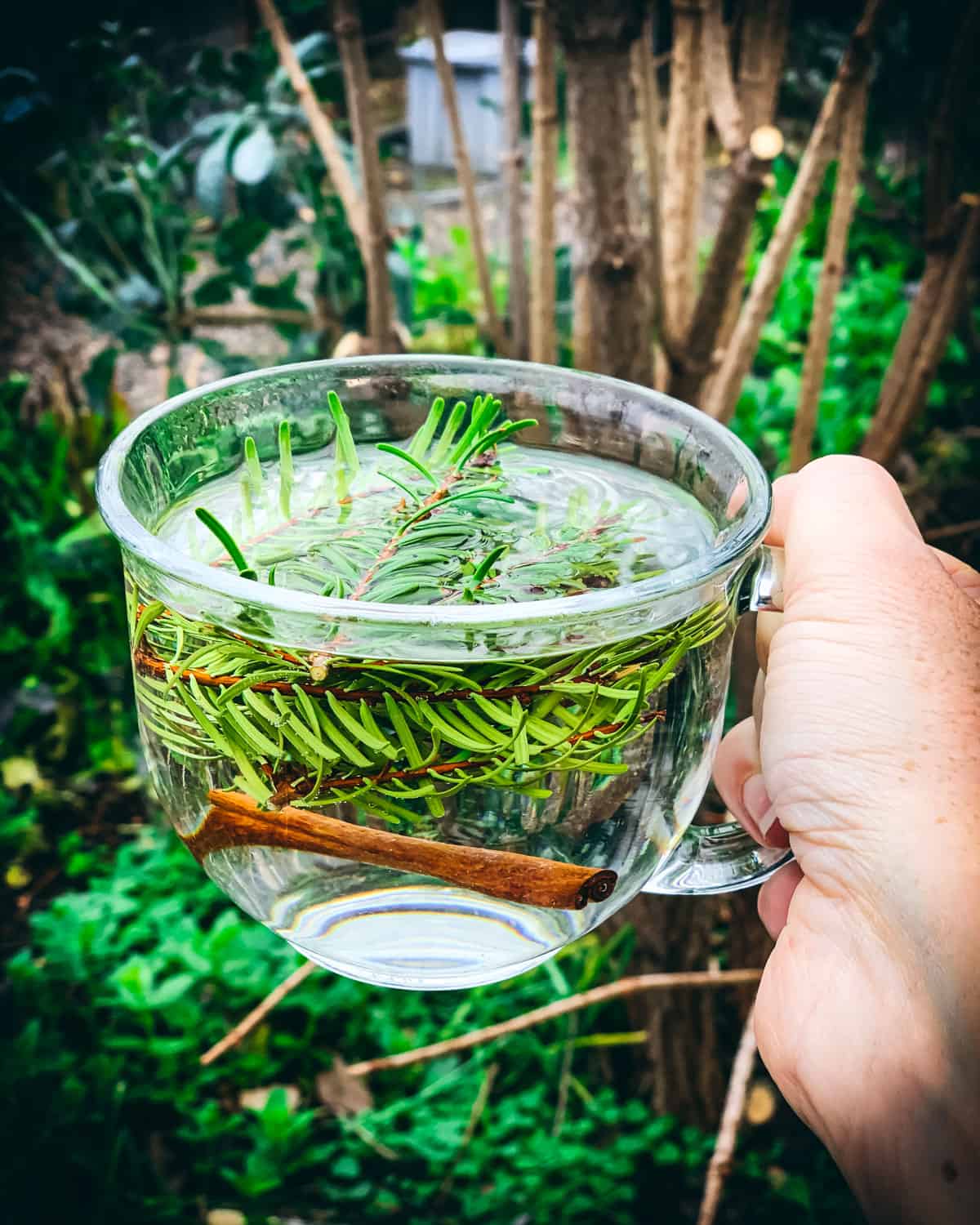
More Pine Needle Recipes
- Pine Needle Cough Syrup
- Conifer Hot Toddy with Rose Hips and Ginger
- Conifer Infused Oil for Body and Mind
- Winter Spice Pine Soap Recipe
- Conifer Needle Shortbread: Foraged Holiday Cookies
- Conifer Infused Vodka for Winter Cocktails
- Pine Lotion Bars
- Pine Needle Soda
- Pine Needle Cookies
- Pine Salve
- Fir Tip Syrup
Pine Needle Tea
Equipment
Ingredients
- 1-2 tbsp conifer needles pine, fir, spruce, or hemlock work best
- 1 cinnamon stick (optional)
- water
Instructions
- Prepare the pine or conifer needles, rinse and snip to smaller size if necessary.
- Place a spoonful of the needles into the bottom of the mug or into a tea ball or strainer. Add a cinnamon stick to the mug if desired.
- Pour boiling water to fill the cup, and let steep for 5-10 minutes.
Notes
- It’s important to properly identify any tree that you are wanting to use for tea to make sure that it is edible.
- For a stronger flavored tea, boil the prepared needles in a pot of water for a few minutes, and strain them out as you pour into your favorite mug. This method makes a lovely strong tea, but it does diminish the vitamin C content some.

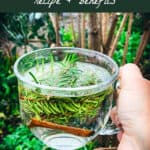
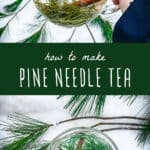
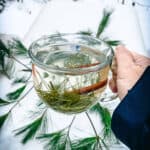

Can you dry the needles to use for later, or do you need to make the tea with them fresh?
It’s best to use them fresh.
Does the sap in the needles leave any residue behind? I’m wondering if it would build up in the mug after a while – do you dedicate one just for pine tea? :)
No, I’ve never had sap in my cup and the needles themselves do not contain sap.
In your research, are for teas ok for kids, or is there an high potential for the needles to be allergenic? I teach at an outdoor school and would love to make Douglas fir with older kids (8-10).
It’s my understanding that pine allergies are rare and I haven’t seen anything to suggest they’re not okay for kids. However, you should do more research to be sure.
Great article, thanks for sharing your knowledge! Do you know of any recordable companies that sell Redwood Tea? I’m trying to find a trusted source.
I’m sorry, I don’t!
I did a different recipe by putting simmering whole pine needles for 7-10 minutes. It came out in a wonderful amber color! The taste was slightly tasteless and bitter but I added honey and it tasted geat!
Any info on Slash Pine…Pinus Elliottii
I’m unfamiliar with that species, but a quick search says they are edible.